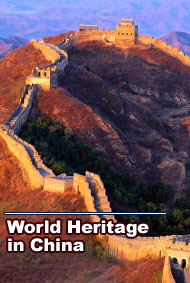
|
|
|
Yueju Opera
In 2009, Yueju Opera was inscribed on the Representative List of the Intangible Cultural Heritage of Humanity by the UNESCO. Description The Chinese tradition of Yueju opera combines Mandarin operatic traditions and Cantonese dialect. Rooted in the Cantonese-speaking provinces of Guangdong and Guangxi in south-eastern China, Yueju opera is characterized by a combination of string and percussion instruments, with elaborate costumes and face painting. It also incorporates stunts and fights using real weapons and drawing on the Shaolin martial arts, as illustrated by the central Wenwusheng role that demands proficiency in both singing and fighting. It has developed a rich repertoire of stories ranging from historical epics to more realistic descriptions of daily life. An important form of recreation, the opera is also, in some rural communities, combined with ceremonial, religious and sacrificial elements into a spiritual amalgam of art and custom known as Shengongxi. Yueju opera is popular throughout China and provides a cultural bond among Cantonese speakers in the country and abroad. They view its success around the world as a point of pride, regarding the opera as an important means by which foreigners come to understand their culture. Today, the tradition is passed to new artists through both drama schools and apprenticeship programmes. Criteria for inscription on the Representative List R1: L’opéra Yueju est une forme de patrimoine culturel des communautés cantonaises de Guangdong, Guangxi, Hong Kong et Macao, qui se transmet comme un art d’interprétation dans les écoles de théâtre ; R2: Its inscription on the Representative List would add greater recognition and support to intangible cultural heritage, contribute to the viability and promotion of Yueju opera, improve cultural communication between the people of China and abroad, and increase cooperation between nations; R3: The Government as well as the practitioners are committed to implementing various safeguarding measures including establishment of an opera teaching system, creation of a database, elaboration of a catalogue and publication and establishment of a research centre; R4: The element has been nominated with the free, prior and informed consent of communities, professionals, practitioners and cultural organizations; R5: The element is inscribed on the National List of Intangible Cultural Heritage administered by the Department of Intangible Cultural Heritage of the Ministry of Culture. |